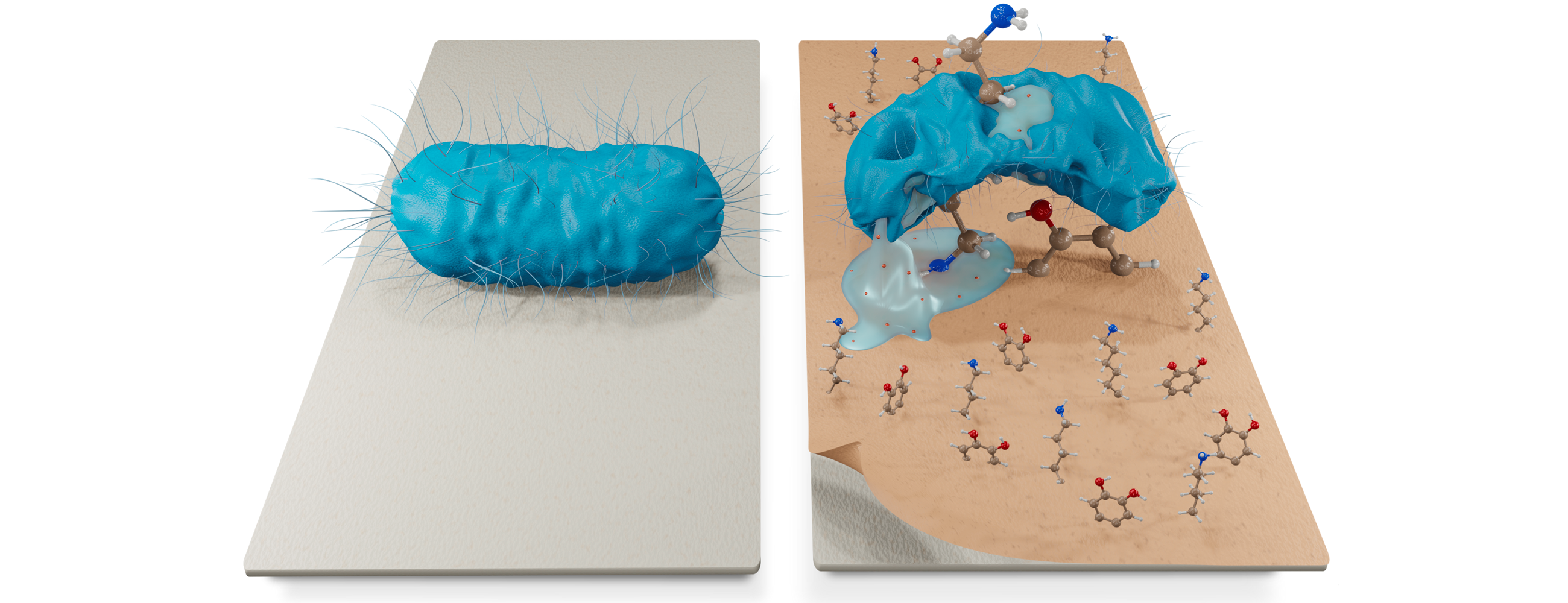The ICN2 Nanostructured Functional Materials Group, under the leadership of CSIC Prof. Daniel Ruiz-Molina, has recently developed novel and efficient antimicrobial materials to combat pathogen spread, infections, and resistance to antibiotics.

According to ICN2 researchers from the Nanostructured Functional Materials Group, led by CSIC Prof. Daniel Ruiz-Molina, antimicrobial resistance (AMR) is on the rise due to the overuse of antibiotics. AMR represents a significant global threat to human health, potentially surpassing cancer as the leading cause of death worldwide by 2050. Their study, published in the ‘Chemical Engineering Journal’, proposes solutions for designing phenol-based materials to enhance their antimicrobial properties, consequently reducing pathogen spread and preventing infections.
In the realm of materials with the potential to harbour bacterial populations, fabrics take a prominent role in patient care. They come into direct contact with sutures and wounds, potentially leading to infections that could harm hospital interventions or undermine biological processes. Up until now, coatings with inorganic antibacterial materials have been developed. However, several obstacles have limited their successful application in clinical settings, including issues related to bacterial resistance, expensive production processes, unregulated release of ions, bioaccumulation, and competitive protein complexation.
Thus, the research team conducted a series of experiments following a simple one-step scalable synthesis under mild conditions and using four affordable materials (paper, cotton fabric, surgical mask middle layer, and commercial band-aids). They discovered that mussel-inspired coatings based on catechol-amine consistently demonstrated effective performance across these substrates commonly used in healthcare environments, showing fast responses against a broad spectrum of microbial species. Additionally, the coating showed effective use in wet conditions, like those in healthcare places with respiratory droplets and biofluids. This lowers the risk of germs spreading indirectly. The bioinspired coating kills germs by making them stick to it through certain molecules. Then, it uses various methods to fight bacteria and fungi, mainly focusing on the continuous formation of Reactive Oxygen Species (ROS), molecules that can have antimicrobial properties, as they are reactive and can damage or inhibit the growth of microorganisms.
In summary, innovative bioinspired coatings have shown significant promise for future applications in clinical settings, offering a practical alternative to current antimicrobial materials.
Behind this scientific breakthrough is a collaborative work with Prof. Victor Yuste from the Institut de Neurociències (INc-UAB) and led by ICN2 researchers, the PhD student José Bolaños-Cardet as the first author and the coordination of Dr Salvio Suárez-García.
Reference article:
Bolaños-Cardet, Jose; Ruiz-Molina, Daniel; Suárez-García, Salvio; Yuste, Victor J. (2024). Bioinspired phenol-based coatings for medical fabrics against antimicrobial resistance. Chemical Engineering Journal, 481, 148674. DOI: https://doi.org/10.1016/j.cej.2024.148674

